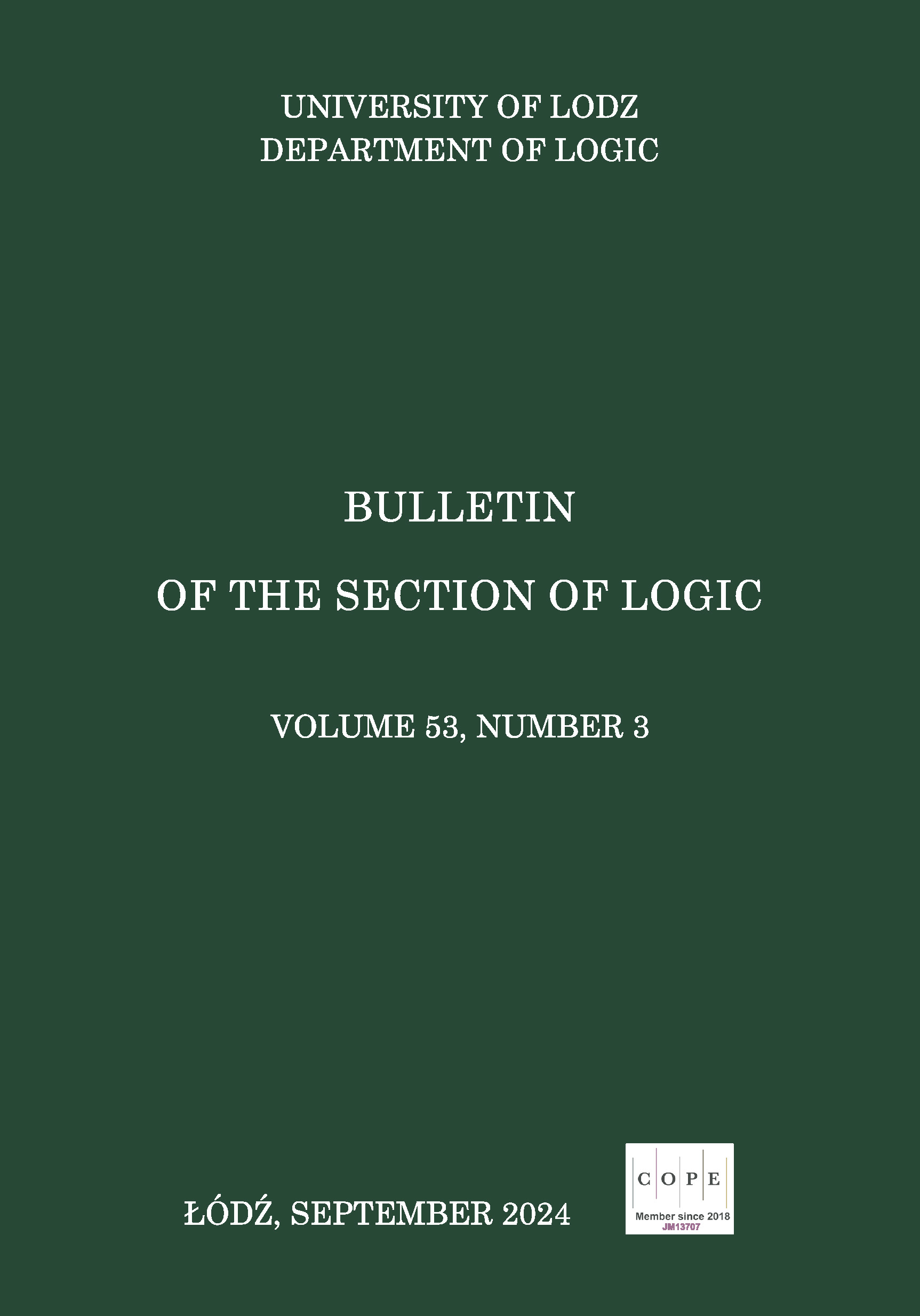About Logically Probable Sentences
DOI:
https://doi.org/10.18778/0138-0680.2024.04Keywords:
probable sentences, majority, logically probable formula, Boolean valuationAbstract
The starting point of this paper is the empirically determined ability to reason in natural language by employing probable sentences. A sentence is understood to be logically probable if its schema, expressed as a formula in the language of classical propositional calculus, takes the logical value of truth for the majority of Boolean valuations, i.e., as a logically probable formula. Then, the formal system P is developed to encode the set of these logically probable formulas. Based on natural semantics, a strong completeness theorem for P is proved. Alternative notions of consequence for logically probable sentences are also considered.
References
R. Fagin, Probabilities on Finite Models, The Journal of Symbolic Logic, vol. 41(1) (1976), pp. 50–58, DOI: https://doi.org/10.2307/2272945
Google Scholar
DOI: https://doi.org/10.1017/S0022481200051756
D. Grossi, G. Pigozzi, Symbolic Logic and Its Applications, Longmans, Green, and Co., London (1906), URL: https://archive.org/details/symboliclogicits00macc/
Google Scholar
D. Grossi, G. Pigozzi, Judgment aggregation: A primer, Synthesis Lectures on Artificial Intelligence and Machine Learning, Springer, Cham (2014), DOI: https://doi.org/10.1007/978-3-031-01568-7
Google Scholar
DOI: https://doi.org/10.1007/978-3-031-01568-7
H. Hi˙z, Extendible Sentential Calculus, The Journal of Symbolic Logic, vol. 24(3) (1959), pp. 193–202, DOI: https://doi.org/10.2307/2963776
Google Scholar
DOI: https://doi.org/10.2307/2963776
D. Makinson, Bridges from Classical to Nonmonotonic Logic, College Publications, Rickmansworth (1906).
Google Scholar
A. Olszewski, Kilka uwag na temat demokracji (A Few Remarks on Democracy), Logos i Ethos, vol. 1(7) (1999), pp. 116–122.
Google Scholar
R. Takemura, Logic and Majority Voting, Journal of Philosophical Logic, vol. 51 (2022), pp. 347–382, DOI: https://doi.org/10.1007/s10992-021-09631-7
Google Scholar
DOI: https://doi.org/10.1007/s10992-021-09631-7
R. Wójcicki, Theory of Logical Calculi, Springer, Dordrecht (1988), DOI: https://doi.org/10.1007/978-94-015-6942-2
Google Scholar
DOI: https://doi.org/10.1007/978-94-015-6942-2
Downloads
Published
How to Cite
Issue
Section
License

This work is licensed under a Creative Commons Attribution-NonCommercial-NoDerivatives 4.0 International License.















